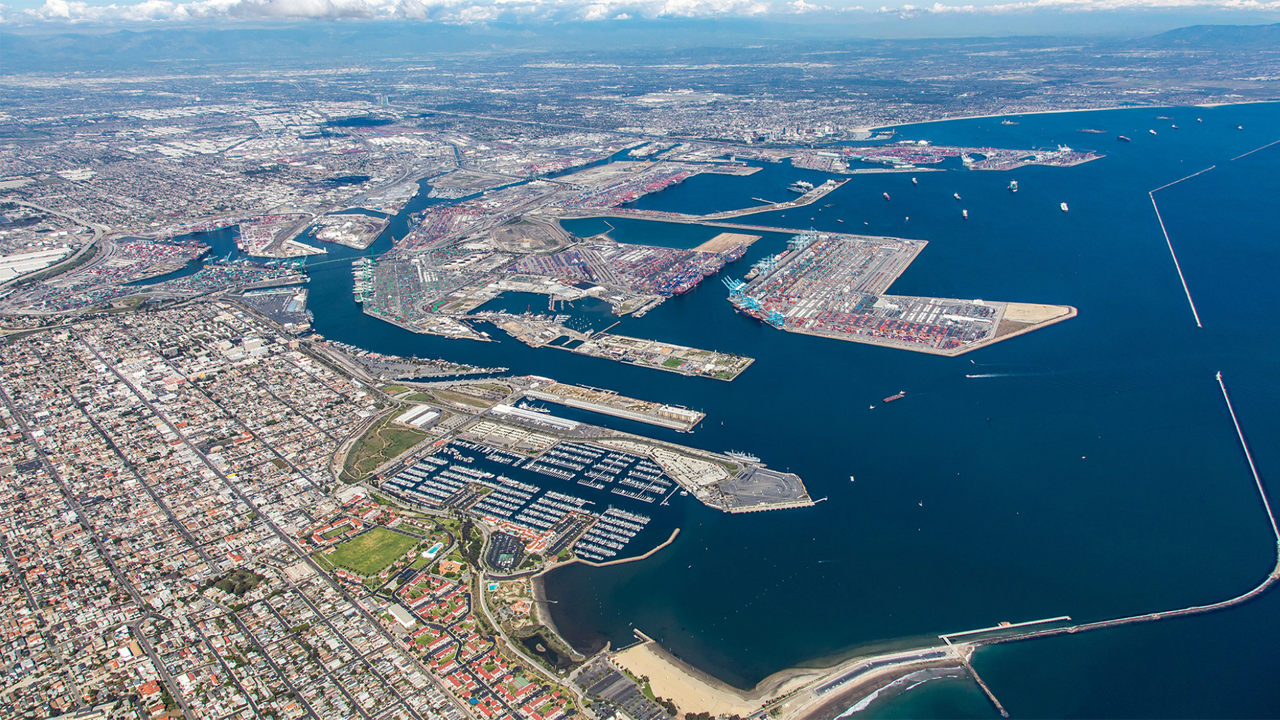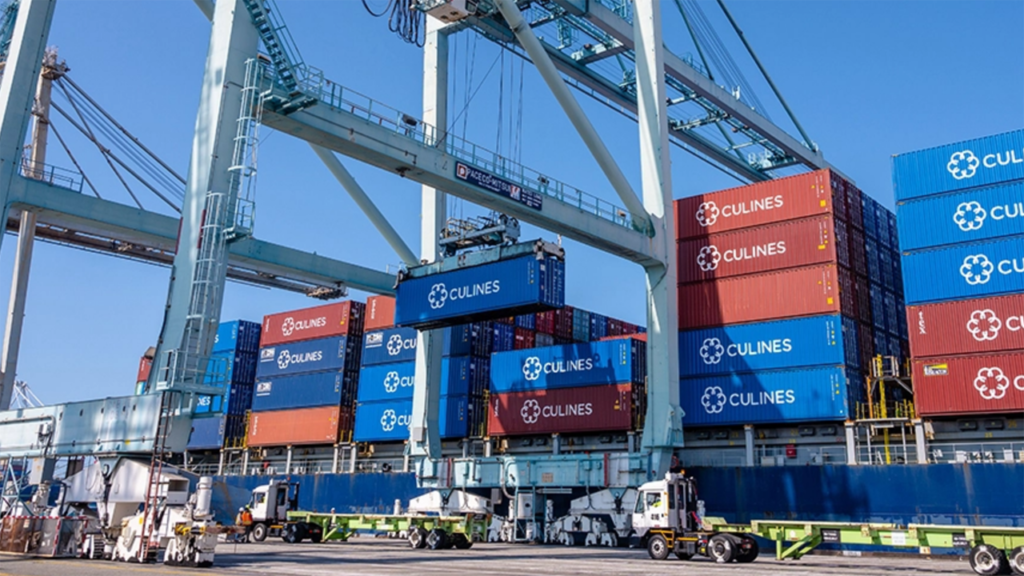
Intermodal Briefs: Ports of Los Angeles, Long Beach
Written by Marybeth Luczak, Executive Editor
Aerial view of the San Pedro Bay Port Complex in California. (Photograph Courtesy of Port of Los Angeles)
Cargo volumes in November were soft at the ports of Los Angeles and Long Beach in California. Both also reported moving less cargo overall in the first 11 months of 2022 vs. the prior-year period.
“Imports into the United States have begun to level off, in addition to cargo that has shifted away from West Coast ports due to protracted labor negotiations,” Port of Los Angeles Executive Director Gene Seroka said on Dec. 14. “In the months ahead, we’re going to have to work harder and smarter to earn cargo back. Every ship, every train, every truck needs to be handled with the top-level service our customers expect and deserve.”
The Port of Los Angeles handled 639,344 Twenty-Foot Equivalent Units (TEUs) in November, down 21% from the same month last year. Overall, it reported handling 7% less cargo in the first 11 months of 2022 vs. last year’s “all-time record.”
November 2022 loaded imports reached 307,080 TEUs, down 24% compared with the prior-year period. Loaded exports came in at 90,116 TEUs, up 9%, and empty containers came in at 242,148 TEUs, down 26% vs. the same month last year.

Trade moving through the Port of Long Beach lightened in November “amid reduced orders from retailers, full warehouses, vessel transfers between the San Pedro Bay ports, and goods shifted toward seaports along the East and Gulf coasts,” the Port reported on Dec. 14.
Dockworkers and terminal operators, it said, moved 588,742 TEUs last month, falling 21% from November 2021. Imports dropped 28.4% to 259,442 TEUs, while exports increased 13.8% to 124,988 TEUs. Empty containers decreased 25.2% to 204,313 TEUs.
The Port of Long Beach experienced a similar decline in October. It reported moving 658,428 TEUs of cargo for the month, down 16.6% from the year-ago period.
During the first 11 months of 2022, the Port reported moving 8,589,553 TEUs, a 0.5% decline from the same period in 2021, which was Port’s strongest year on record. In 2021, it logged 1.44 million TEUs of loaded exports, and through the first 11 months of 2022, nearly 1.3 million TEUs.
“While some import volume has shifted to other gateways, we are confident that a good portion of it will return to the San Pedro Bay,” Port of Long Beach Executive Director Mario Cordero said. “As we move toward normalization of the supply chain, it’s time to refocus our efforts on engaging in sustainable and transformative operations that will secure our place as a leader in trans-Pacific trade.”
The Port noted that spending is stronger heading into the end of the year, according to economists, “as consumers pivot away from dining out, live entertainment and other services toward purchasing goods for the holiday season.”
At the San Pedro Bay port complex, long-dwelling containers have been reduced by more than 90% since the end of October 2021, when the ports of Long Beach and Los Angeles initiated a Congestion Dwell Fee, the Port of Long Beach reported. “Although the fee has not been assessed,” the Port said, “it has incentivized shippers to remove long-dwelling import containers from terminals.”



